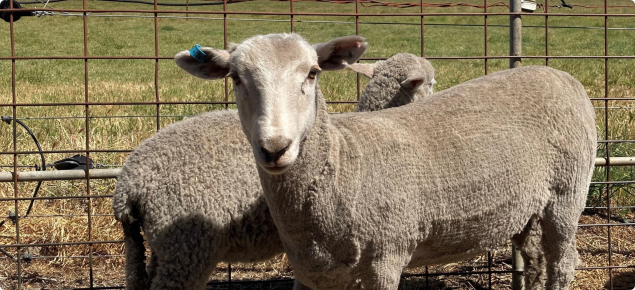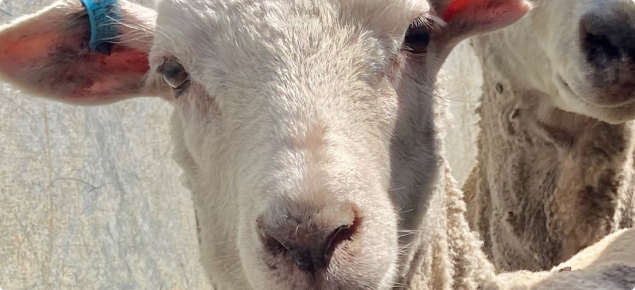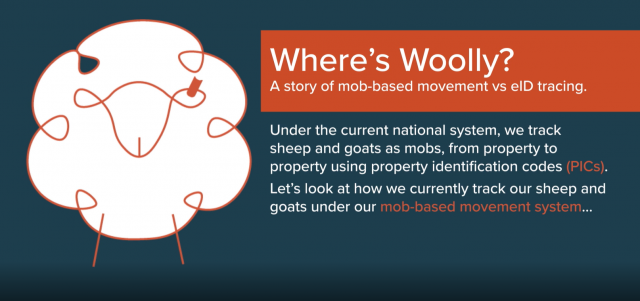Transitioning to eIDs in WA
Electronic identification devices, or ‘eIDs,’ allow for the individual identification of animals, as they contain a microchip, providing a unique identifier for each animal as it's scanned. From birth to processing, each animal's journey can be electronically recorded, making it quicker and more accurate to trace the movement of sheep and goats across the market chain.
The implementation of eIDs allows for more precise tracking, enabling individual animals to be traced rather than just mobs or consignments.
Where's Woolly video
Click the green link below to watch the video and learn more about the transition to eIDs in Australia.
Where's Woolly video.mp4
National adoption of eIDs for sheep and goats
While the electronic tagging of cattle became mandatory in Australia in 2005, the identification of sheep and goats is currently via a visual ear tag identification system in all Australian jurisdictions except Victoria.
On 9 September 2022, Australian agriculture ministers agreed to a National Implementation Plan toward the nationwide implementation of sheep and goat eID tagging and tracing commencing from 1 January 2025.
In Western Australia, the Biosecurity and Agriculture Management (Identification and Movement of Stock and Apiaries) Regulations 2011 set out the requirements for the identification and movement of sheep and goats.
eID implementation dates for WA
| Milestone dates | |||
| eID Tagging | eID Scanning | ||
| Prior to 1 Jan 2025 | From 1 Jan 2025 onward | From 1 July 2025 onward | From 1 July 2026 onward |
| Sheep and goats born prior to 1 January 2025 do not require eID tags unless leaving a property from 1 July 2026 onward. | Sheep and goats, born from 1 January 2025 onward, to be eID tagged before leaving their property (or within 6 months of birth). | Saleyards and Abattoirs required to scan any sheep and goats with eID tags. | All other properties or facilities required to eID scan all sheep and goats upon arrival. |
Sheep and goats, born before 1 January 2025 will only require an eID if departing a property or facility, from 1 July 2026 onwards. Sheep and goats born prior to 1 January 2025 and departing a property prior to 1 July 2026 only require a visual tag.
Sheep and goats born from 1 January 2025 onward will require an eID when leaving the property, or when they reach 6 months of age, whichever comes first.
Saleyards and abattoirs will be required to start scanning any eID tagged sheep and goats from 1 July 2025. Saleyard and abattoirs will be able to continue processing visual tags, for stock born prior to 1 January 2025, until 1 July 2026.
All remaining properties or facilities receiving sheep or goats will be required to scan all eIDs from 1 July 2026. Visual tagging will no longer apply from this date.
Amendments to Biosecurity Regulations
The Biosecurity and Agriculture Management (Identification and Movement of Stock and Apiaries) Regulations 2013 (Regulations) are being amended to mandate the use of electronic identification technologies and practices for sheep and goats within Western Australia. A consultation period on the new Regulations is open until 10 October 2024. To have your say on these, please visit the department's consultation page where you can view the new Regulations along with a consultation paper and frequently asked questions document to help explain some of the changes that are being made.
Government support
The total value of support provided for industry’s transition to a sheep and goat eID regime in WA is $25.6M, with $21.6M committed from the WA Government and $4M from the Australian Government.
Tag Incentive Payment Scheme
Under the Tag Incentive Payment (TIP) scheme, Western Australian sheep and goat producers will continue to have access to discounted, accredited, eIDs throughout 2024.
The TIP scheme, which commenced as a pilot in March 2023, provided for a $0.75 reduction in the cost of sky blue eIDs in 2023.
Continuing the TIP scheme will ensure producers are able to continue purchasing discounted, accredited, black eIDs in 2024, as part of WA's transition to the mandatory new eID regime.
Find out more about the announcement of the TIP scheme pilot and the subsequent extension of the TIP scheme.
eID Infrastructure Grants Program
The WA Government announced a $3.52M grants package to help the sheep and goat industry prepare for a smooth transition to the new national eID system.
A first round of grants was offered directly to saleyards, abattoirs, export depots, registered feedlots and livestock agents to integrate eID technology and equipment into their business. Grants will be used to purchase eID scanners, readers, wands and essential eID tools and materials, as well as undertake limited works to accommodate eID technologies.
A second round of competitive grants valued at $10,000 each opened on 1 March and closed on 17 May 2024. The infrastructure grants were available to smaller, seasonal downstream market operators as well as community and grower groups.
To view the Grant Guidelines and Frequently Asked Questions used in the program view the right hand side of this page.
Resources
See the right hand side of this webpage for downloadable resources on the transition to sheep and goat eID in WA, including:
- Support for sheep and goat eID flyer.
- Financial support for purchasing eIDs flyer.
National Livestock Identification System
The National Livestock Identification System (NLIS) was established in Australia to support the traceability of cattle, sheep, goats and pigs. The NLIS is a traceability system comprising identified livestock and properties recording stock movements on a central database. All animals are identified with an accredited NLIS visual or eID and each property is identified with a Property Identification Code (PIC).
As animals are bought, sold and moved along the supply chain, each movement is recorded on the NLIS database. The NLIS is underpinned by State and Territory legislation, which forms the regulatory framework for the system.
Identification devices
Electronic identification devices (eIDs) allow individual identification of animals. These devices contain a Radio Frequency Identifier (RFID) microchip that can be read via a handheld scanning wand or panel reader. Each device has a unique internal serial number linked to an external code (NLISID) to provide the unique identifier associated with the animal that is tagged.
- The RFID is like the VIN of a car and the external NLISID like the numberplate – they both identify and can be used to trace the owner of the one vehicle.
- eID for livestock includes:
- ear tags (sheep, goats, cattle)
- hock bands (goats only), and
- rumen boluses (cattle only).
RFID and eID technology has been used successfully for many years in livestock such as cattle and companion animals such as dogs and cats.
Only devices accredited by ISC can be used in sheep and goats for eID purposes.
Discounted eIDs
Currently there are 5 manufacturers involved in the Tag Incentive Payment scheme, applying a $0.75 discount per eID.
For more information
If you have any questions about sheep and goat eID, please contact eIDTeam@dpird.wa.gov.au



